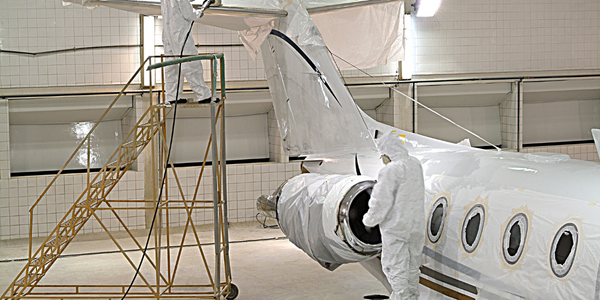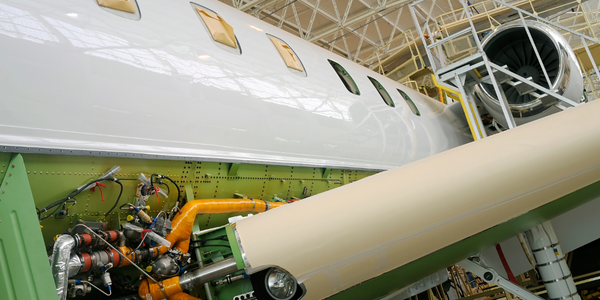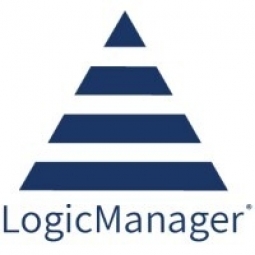Customer Company Size
Large Corporate
Country
- United States
- Other
Product
- LogicManager's SaaS platform
- Enterprise Risk Management system
Tech Stack
- SaaS
Implementation Scale
- Enterprise-wide Deployment
Impact Metrics
- Cost Savings
- Productivity Improvements
Technology Category
- Platform as a Service (PaaS) - Application Development Platforms
Applicable Industries
- Aerospace
Applicable Functions
- Business Operation
Services
- Cloud Planning, Design & Implementation Services
About The Customer
The customer is a global security and aerospace company that focuses on the research, design, development, and manufacturing of advanced technology. They provide services to both domestic and international government agencies, as well as commercial partners. The business is comprised of multiple business units and product lines across dozens of nations. The company is a public company with over 100,000 employees and $40B in sales. The company operates in the manufacturing industry. Due to the nature of their work for the federal government in the fields of defense and security, the organization has extensive IT requirements.
The Challenge
The customer, a global security and aerospace company, was implementing an Enterprise Risk Management system in the corporate branch. The aim was to identify and assess risk across all business units, penetrating down to the vice president level. With over 500 participants in the Risk and Control SelfAssessment (RCSA), the risk management team was left with a vast amount of data and no means of aggregating it cross-functionally to departments, the appropriate business unit, or even the enterprise at large. The customer's method of data collection, consisting of disparate spreadsheets, provided no consistency or year-over-year trending. The risk management team spent nearly a quarter analyzing the data for audit and board reports, but the findings were only loosely tied to the company's strategic plan and not at all to the audit function, which rolls up to the same executive branch. The organization was also spending over $10,000 annually outsourcing survey distribution.
The Solution
LogicManager's subscription-based service provided an ideal platform with which the customer could service its ERM programs globally. Due to the nature of concurrent licenses, the organization realized substantial cost savings, as users in different time zones rarely overlapped and could therefore share licenses, or 'seats,' without interruption. In regards to information security requirements, an external datacenter can (by the very nature of its business) expend a great percentage of its resources toward information security. Upon further evaluation by the customer, LogicManager's Datacenter was found to exceed even the internal requirements the customer imposed on its IT operations. LogicManager's SaaS service embedded the best practices needed to overcome the challenges of a large distributed data set by providing standardization to the risk assessment process. LogicManager's Taxonomy allowed the customer to replicate its business process structure, providing clarity and allowing the customer to slice and dice data according to the executives they were meeting with.
Operational Impact
Quantitative Benefit

Case Study missing?
Start adding your own!
Register with your work email and create a new case study profile for your business.
Related Case Studies.

Case Study
Airbus Soars with Wearable Technology
Building an Airbus aircraft involves complex manufacturing processes consisting of thousands of moving parts. Speed and accuracy are critical to business and competitive advantage. Improvements in both would have high impact on Airbus’ bottom line. Airbus wanted to help operators reduce the complexity of assembling cabin seats and decrease the time required to complete this task.

Case Study
Aircraft Predictive Maintenance and Workflow Optimization
First, aircraft manufacturer have trouble monitoring the health of aircraft systems with health prognostics and deliver predictive maintenance insights. Second, aircraft manufacturer wants a solution that can provide an in-context advisory and align job assignments to match technician experience and expertise.

Case Study
Aerospace & Defense Case Study Airbus
For the development of its new wide-body aircraft, Airbus needed to ensure quality and consistency across all internal and external stakeholders. Airbus had many challenges including a very aggressive development schedule and the need to ramp up production quickly to satisfy their delivery commitments. The lack of communication extended design time and introduced errors that drove up costs.

Case Study
Accelerate Production for Spirit AeroSystems
The manufacture and assembly of massive fuselage assemblies and other large structures generates a river of data. In fact, the bill of materials for a single fuselage alone can be millions of rows of data. In-house production processes and testing, as well as other manufacturers and customers created data flows that overwhelmed previous processes and information systems. Spirit’s customer base had grown substantially since their 2005 divestiture from Boeing, resulting in a $41 billion backlog of orders to fill. To address this backlog, meet increased customer demands and minimize additional capital investment, the company needed a way to improve throughput in the existing operational footprint. Spirit had a requirement from customers to increase fuselage production by 30%. To accomplish this goal, Spirit needed real-time information on its value chain and workflow. However, the two terabytes of data being pulled from their SAP ECC was unmanageable and overloaded their business warehouse. It had become time-consuming and difficult to pull aggregate data, disaggregate it for the needed information and then reassemble to create a report. During the 6-8 hours it took to build a report, another work shift (they run three per day) would have already taken place, thus the report content was out-of-date before it was ever delivered. As a result, supervisors often had to rely on manual efforts to provide charts, reports and analysis.

Case Study
Developing Smart Tools for the Airbus Factory
Manufacturing and assembly of aircraft, which involves tens of thousands of steps that must be followed by the operators, and a single mistake in the process could cost hundreds of thousands of dollars to fix, makes the room for error very small.








